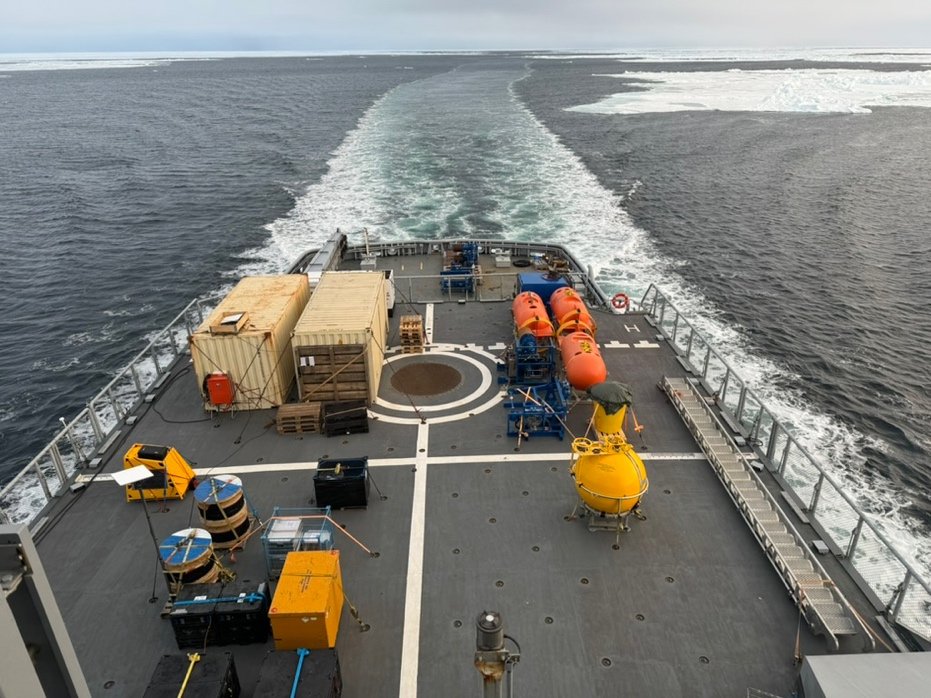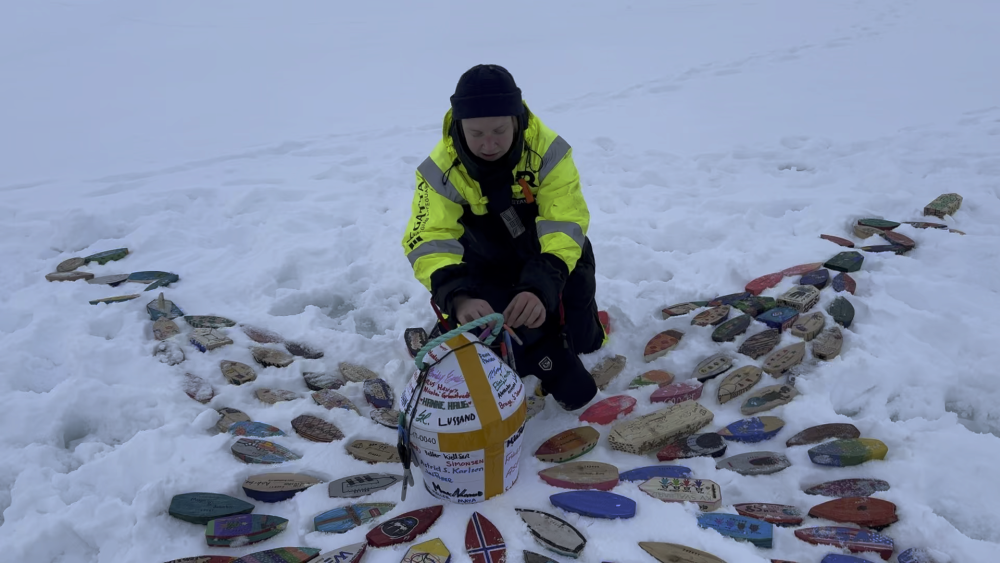HiAOOS 2025 Cruise: Expanding the Frontiers of Arctic Ocean Observation

Between 22 July and 17 August 2025, scientists, engineers, and students embarked on the KV Svalbard for the HiAOOS 2025 cruise, a collaborative effort to advance Arctic Ocean observation technologies. The expedition brought together experts from Norway, Poland, Germany, and the USA, alongside master’s students from the University of Bergen and the University of Rhode Island. Their mission: to strengthen the foundation for year-round monitoring of a rapidly changing Arctic.
Building a Multipurpose Mooring Network
During the cruise, teams deployed three new oceanographic moorings north of Svalbard and in the Nansen Basin, and recovered one from Kongsfjorden. These moorings, equipped with acoustic arrays and oceanographic sensors, join four others deployed in 2024, together forming a unique multipurpose network across the Nansen and Amundsen Basins.
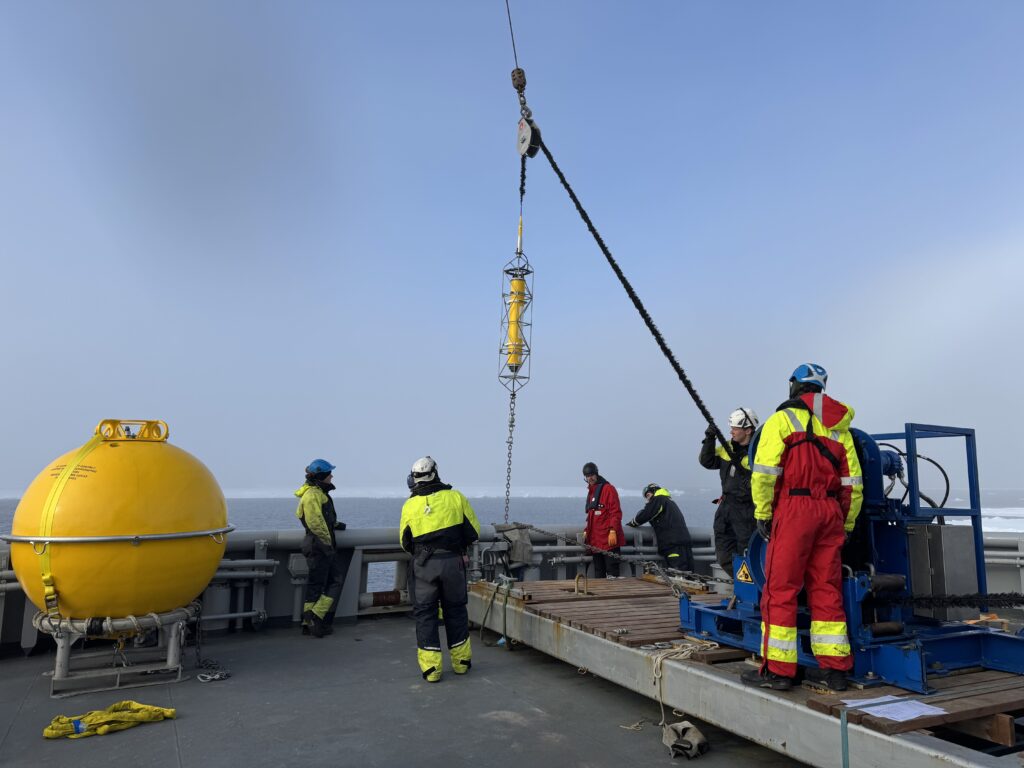
This network is designed to capture critical signals of climate change—including temperature, salinity, oxygen, ocean currents, sea ice interactions, and even marine mammal vocalizations. Some moorings also feature low-frequency acoustic sources that enable acoustic thermometry, a technique for estimating large-scale ocean temperature. By 2026, the full network will deliver unprecedented baseline data essential for climate prediction and the upcoming International Polar Year (IPY-5).
Testing New Frontiers in Underwater Communication
HiAOOS 2025 also marked a leap forward in underwater positioning and communication. Using acoustic signals, the team tested an experimental underwater GPS (UW-GPS) system. This technology could one day guide autonomous vehicles safely under ice. A drifting acoustic receiver buoy, developed by NAXYS, was deployed to record signals year-round, while students tested a profiling float with hydrophone capability.
In parallel, the SFI Smart Ocean project conducted the first field tests of long-range underwater communication beneath Arctic sea ice. Results from these experiments will shape the design of future autonomous observing systems, where reliable under-ice communication is a game-changer.
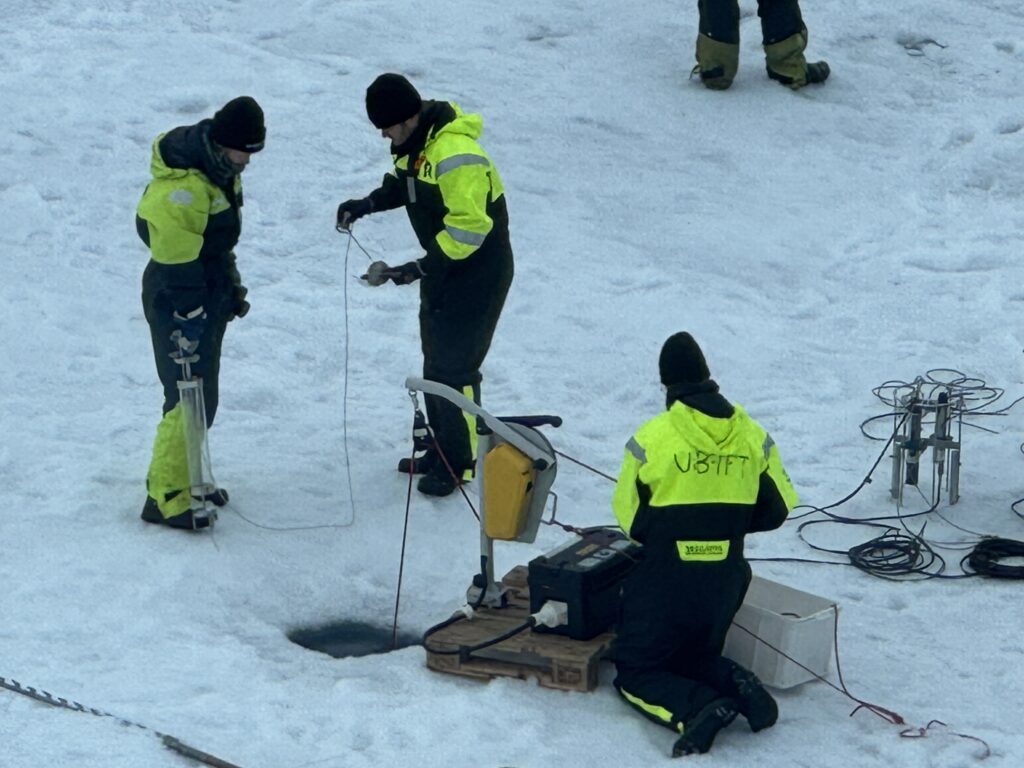
Light, Ice, and Life: Optical Observations
Researchers also carried out nine ice stations to measure light penetration and water properties under the sea ice. These observations, linked to student-led master’s projects, will help determine how changing ice and water conditions affect Arctic ecosystems and biological productivity. Additional optical and CTD work in Svalbard fjords provided a valuable comparison between glacial meltwater environments and the central Arctic Ocean.
Ice Drift and Citizen Science
The Norwegian Meteorological Institute deployed 16 OpenMetBuoys along a transect from the Nansen to the Amundsen Basin. Equipped with GPS and environmental sensors, these buoys provide near-real-time data on ice drift, snow, and ice thickness—feeding into forecasting models and satellite validation.
The cruise also supported Float Your Boat, an outreach project with schools in Norway and the USA. Hundreds of schoolchildren decorated small wooden boats, which were deployed on Arctic sea ice alongside tracking buoys. Students can now follow their boats online as they drift with the ice—bringing Arctic science directly into classrooms across the Atlantic.
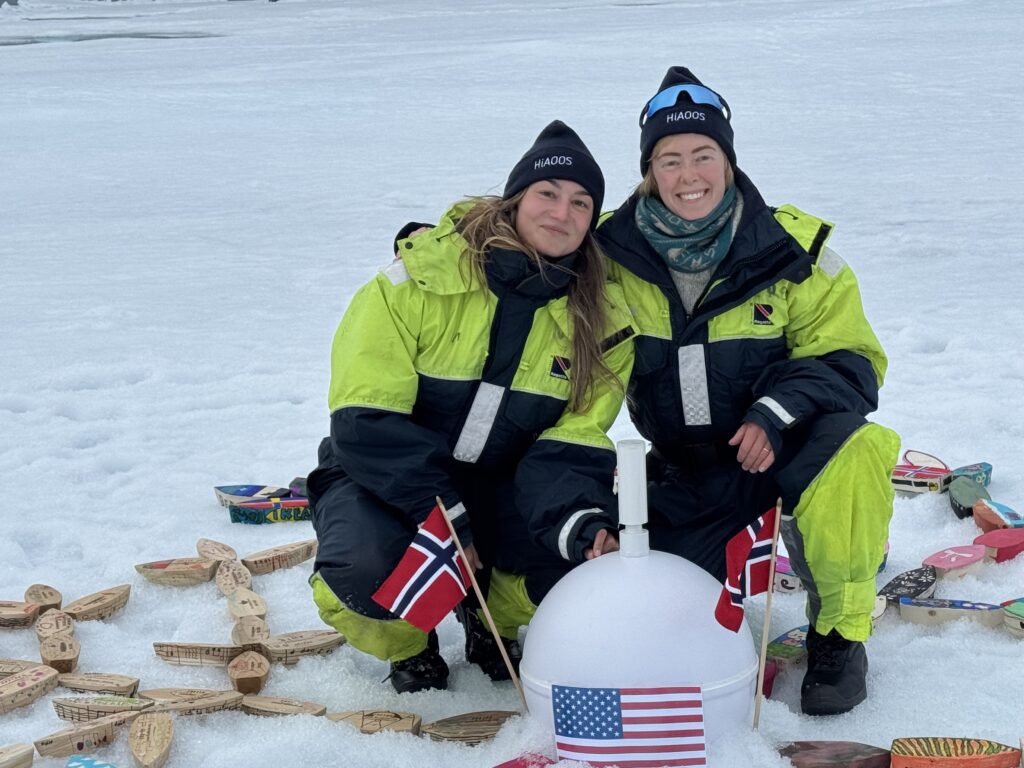
Looking Ahead
The HiAOOS 2025 cruise represents a major milestone in building a sustained Arctic observing system. With its combination of innovative technologies, baseline measurements, and outreach, HiAOOS is paving the way for improved climate monitoring and international collaboration in the High Arctic.
Special thanks go to the Norwegian Coast Guard and KV Svalbard crew for their vital support in making this cruise a success.
🔗 Read the full cruise summary report here: Zenodo DOI: 10.5281/zenodo.16893765
Check out previous HiAOOS field campaigns:

